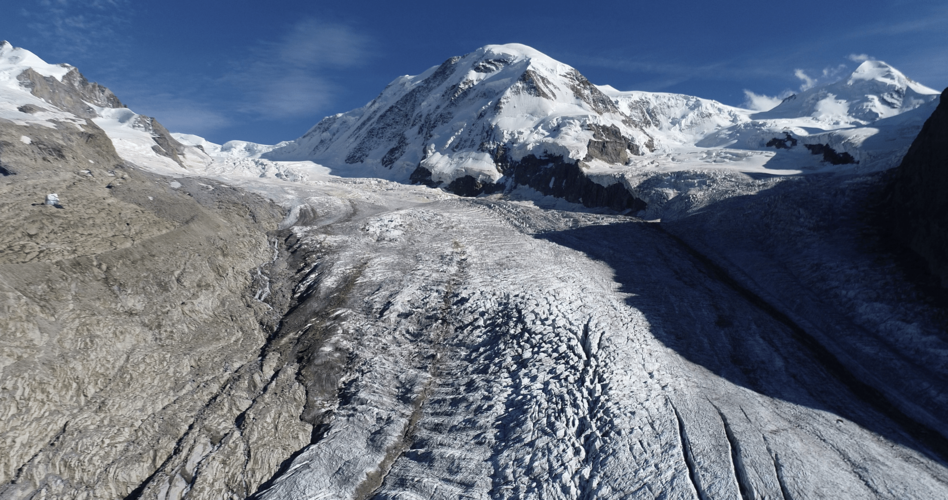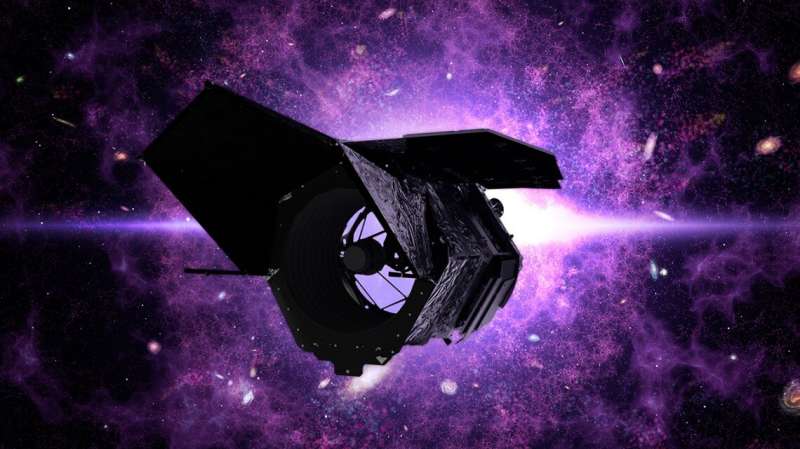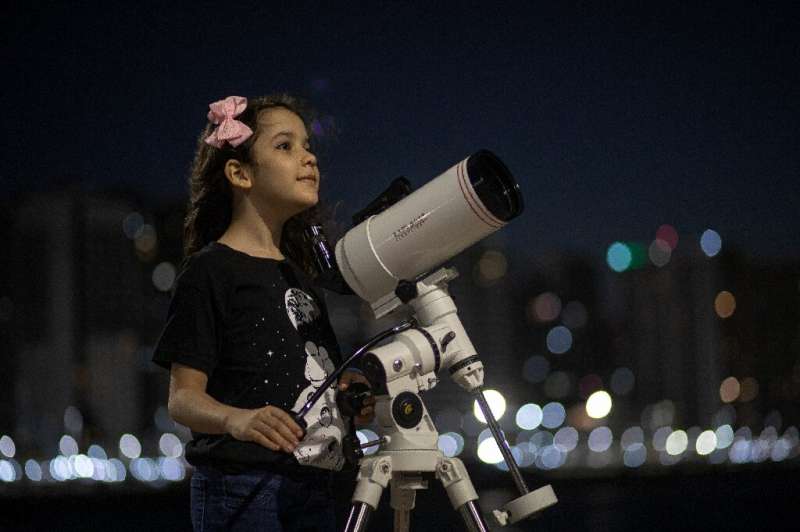Space for climate: raising awareness ahead of COP26
Friday, 01 October 2021 05:40
Ahead of the 26th UN Climate Change Conference of Parties (COP26), climate and energy ministers are coming together this week in Milan, Italy, to discuss the key political topics to be addressed at the upcoming global summit – taking place in early November in Glasgow.
ESA will be present at both the Pre-COP and COP26, highlighting the vital importance of observing our changing world from space and showing how satellite data play a critical role in underpinning climate policy.
Industry group working on satellite servicing standards
Thursday, 30 September 2021 18:20
A satellite servicing industry group is making progress on a series of standards that it believes can help enable the growth of the nascent field.
DoD trying to keep China from accessing critical U.S. space technology
Thursday, 30 September 2021 16:21
Chinese investments in U.S. space startups and use of Chinese software by DoD suppliers are issues of growing concern at the Pentagon, officials said.
'Planet confusion' could slow Earth-like exoplanet exploration
Thursday, 30 September 2021 15:55
When it comes to directly imaging Earth-like exoplanets orbiting faraway stars, seeing isn't always believing.
A new Cornell study finds that next-generation telescopes used to see exoplanets could confuse Earth-like planets with other types of planets in the same solar system.
With today's telescopes, dim distant planets are hard to see against the glare of their host stars, but next-generation tools such as the Nancy Grace Roman Space Telescope, currently under development by NASA, will be better at imaging Earth-like planets, which orbit stars at just the right distance to offer prime conditions for life.
"Once we have the capability of imaging Earth-like planets, we're actually going to have to worry about confusing them with completely different types of planets," said Dmitry Savransky, associate professor in the Sibley School of Mechanical and Aerospace Engineering (College of Engineering) and the Department of Astronomy (College of Arts and Sciences).
Head in the sky: 8-year-old Brazilian girl dubbed world's youngest astronomer
Thursday, 30 September 2021 14:11
When Nicole Oliveira was just learning to walk, she would throw up her arms to reach for the stars in the sky.
Today, at just eight years of age, the Brazilian girl is known as the world's youngest astronomer, looking for asteroids as part of a NASA-affiliated program, attending international seminars and meeting with her country's top space and science figures.
In Oliveira's room, filled with posters of the solar system, miniature rockets and Star Wars figures, Nicolinha, as she is affectionately known, works on her computer studying images of the sky on two large screens.
The project, called Asteroid Hunters, is meant to introduce young people to science by giving them a chance to make space discoveries of their own.
Virgin Galactic cleared to launch after US closes safety probe
Thursday, 30 September 2021 12:36 Virgin Galactic said Wednesday it had been cleared for spaceflight after the Federal Aviation Agency (FAA) concluded a probe into a safety "mishap" related to its high-profile mission in July that featured company founder Richard Branson.
The FAA told the company it had accepted its proposed corrective actions related to the flight, which saw the SpaceShipTwo vehicle drop below its assigned
Virgin Galactic said Wednesday it had been cleared for spaceflight after the Federal Aviation Agency (FAA) concluded a probe into a safety "mishap" related to its high-profile mission in July that featured company founder Richard Branson.
The FAA told the company it had accepted its proposed corrective actions related to the flight, which saw the SpaceShipTwo vehicle drop below its assigned Space Force upskilling Guardians with process mapping and automation
Thursday, 30 September 2021 12:36 The Space Force held its first Robotic Process Automation Workshop to explore how to effectively leverage bots to execute repetitive processes, as part of efforts to modernize the world-class fighting force at the speed of relevance. Permanent staff from the U.S. Space Force Space Operations Command, Headquarters U.S. Space Force, Air Force Personnel Center, and Air Force Reserve Personnel Cente
The Space Force held its first Robotic Process Automation Workshop to explore how to effectively leverage bots to execute repetitive processes, as part of efforts to modernize the world-class fighting force at the speed of relevance. Permanent staff from the U.S. Space Force Space Operations Command, Headquarters U.S. Space Force, Air Force Personnel Center, and Air Force Reserve Personnel Cente Recreating "real food meals" as small cubes that taste like candy
Thursday, 30 September 2021 12:36 According to "The State of Food Security and Nutrition in the World," approximately 811 million people around the world were undernourished in 2020. Although proper nutrition is the cornerstone of good health, it is something many people still do not have access to. To help overcome this global challenge, MealCubes recreate the world's healthiest meals in the convenience of a few tasty candies t
According to "The State of Food Security and Nutrition in the World," approximately 811 million people around the world were undernourished in 2020. Although proper nutrition is the cornerstone of good health, it is something many people still do not have access to. To help overcome this global challenge, MealCubes recreate the world's healthiest meals in the convenience of a few tasty candies t DARPA'S Hypersonic Air-breathing Weapon Concept achieves successful flight
Thursday, 30 September 2021 12:36 DARPA, in partnership with the U.S. Air Force, completed a free flight test of its Hypersonic Air-breathing Weapon Concept (HAWC) last week. The missile, built by Raytheon Technologies, was released from an aircraft seconds before its Northrop Grumman scramjet (supersonic combustion ramjet) engine kicked on. The engine compressed incoming air mixed with its hydrocarbon fuel and began igniting th
DARPA, in partnership with the U.S. Air Force, completed a free flight test of its Hypersonic Air-breathing Weapon Concept (HAWC) last week. The missile, built by Raytheon Technologies, was released from an aircraft seconds before its Northrop Grumman scramjet (supersonic combustion ramjet) engine kicked on. The engine compressed incoming air mixed with its hydrocarbon fuel and began igniting th NASA launches new mission to monitor Earth's landscapes
Thursday, 30 September 2021 12:36 Landsat 9, a NASA satellite built to monitor the Earth's land surface, successfully launched at 2:12 p.m. EDT Monday from Vandenberg Space Force Base in California.
A joint mission with the U.S. Geological Survey (USGS), Landsat 9 lifted off on a United Launch Alliance Atlas V rocket from Vandenberg's Space Launch Complex 3E. Norway's Svalbard satellite-monitoring ground station acquired s
Landsat 9, a NASA satellite built to monitor the Earth's land surface, successfully launched at 2:12 p.m. EDT Monday from Vandenberg Space Force Base in California.
A joint mission with the U.S. Geological Survey (USGS), Landsat 9 lifted off on a United Launch Alliance Atlas V rocket from Vandenberg's Space Launch Complex 3E. Norway's Svalbard satellite-monitoring ground station acquired s Did a cosmic impact destroy an ancient city in the Jordan Valley
Thursday, 30 September 2021 12:36 In the Middle Bronze Age (about 3600 years ago or roughly 1650 BCE), the city of Tall el-Hammam was ascendant. Located on high ground in the southern Jordan Valley, northeast of the Dead Sea, the settlement in its time had become the largest continuously occupied Bronze Age city in the southern Levant, having hosted early civilization for a few thousand years. At that time, it was 10 times large
In the Middle Bronze Age (about 3600 years ago or roughly 1650 BCE), the city of Tall el-Hammam was ascendant. Located on high ground in the southern Jordan Valley, northeast of the Dead Sea, the settlement in its time had become the largest continuously occupied Bronze Age city in the southern Levant, having hosted early civilization for a few thousand years. At that time, it was 10 times large Microgravity on demand with Earth return through ESA's Boost!
Thursday, 30 September 2021 12:36 A new round-trip commercial space transportation service from 2022, backed by ESA, will enable companies to manufacture in space very pure and more capable materials, discover new pharmaceutical drugs and bring them back for use on Earth.
Space Forge, based in the UK, is working with partners to develop ForgeStar - a reusable suitcase-sized vehicle that can be lofted to space and which wil
A new round-trip commercial space transportation service from 2022, backed by ESA, will enable companies to manufacture in space very pure and more capable materials, discover new pharmaceutical drugs and bring them back for use on Earth.
Space Forge, based in the UK, is working with partners to develop ForgeStar - a reusable suitcase-sized vehicle that can be lofted to space and which wil Nitrogen-fixing bacteria help clover plants grow in Mars-like soil
Thursday, 30 September 2021 12:36 If astronauts are to set up a base and spend extended periods of time on Mars, they're going to need to be able to synthesize water and grow their own food.
Growing conditions are quite different on the Red Planet, so scientists on Earth have been conducting experiments to better understand how plants will behave in Martian regolith.
New research, published Wednesday in the journ
If astronauts are to set up a base and spend extended periods of time on Mars, they're going to need to be able to synthesize water and grow their own food.
Growing conditions are quite different on the Red Planet, so scientists on Earth have been conducting experiments to better understand how plants will behave in Martian regolith.
New research, published Wednesday in the journ Climate change and its environmental impacts on crop growth
Thursday, 30 September 2021 12:36 The Earth is heating up. The effects of human-caused global climate change are becoming more and more apparent as we see more record-breaking heat waves, intense droughts, shifts in rainfall patterns and a rise in average temperatures. And these environmental changes touch every part of crop production.
NASA, along with partner agencies and organizations, monitors all of these environmenta
The Earth is heating up. The effects of human-caused global climate change are becoming more and more apparent as we see more record-breaking heat waves, intense droughts, shifts in rainfall patterns and a rise in average temperatures. And these environmental changes touch every part of crop production.
NASA, along with partner agencies and organizations, monitors all of these environmenta National Geospatial-Intelligence Agency funds Phase 4a of MagQuest Challenge
Thursday, 30 September 2021 12:36 The National Geospatial-Intelligence Agency (NGA) just launched the Demonstration Phase (Phase 4a) of its MagQuest Challenge to develop novel data collection approaches for the World Magnetic Model.
The WMM ultimately ensures the accuracy of navigation because it corrects for differences in magnetic forces at a user's location. The model is used by thousands of systems for mobile navigation app
The National Geospatial-Intelligence Agency (NGA) just launched the Demonstration Phase (Phase 4a) of its MagQuest Challenge to develop novel data collection approaches for the World Magnetic Model.
The WMM ultimately ensures the accuracy of navigation because it corrects for differences in magnetic forces at a user's location. The model is used by thousands of systems for mobile navigation app 
